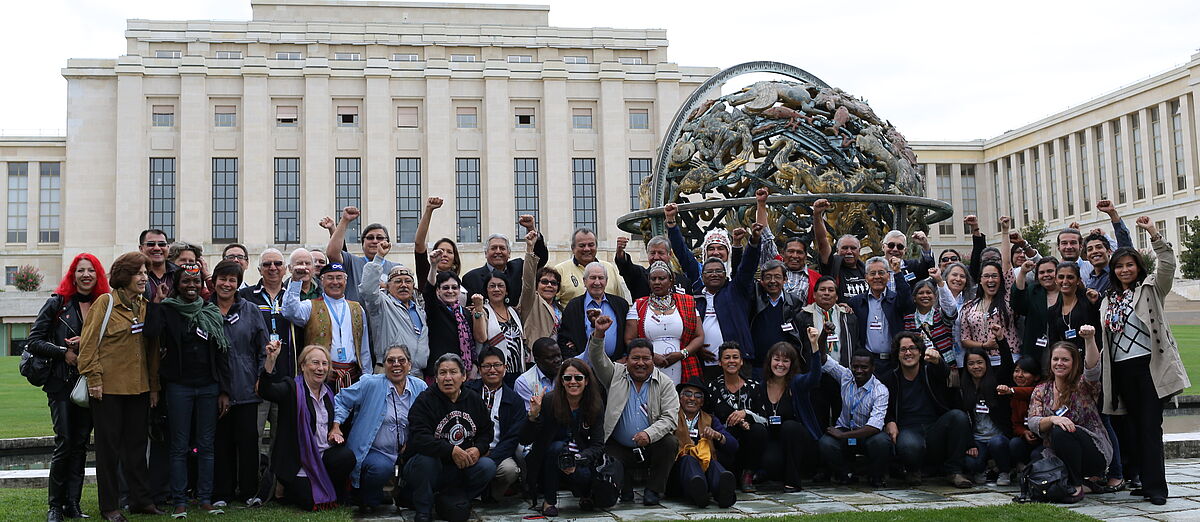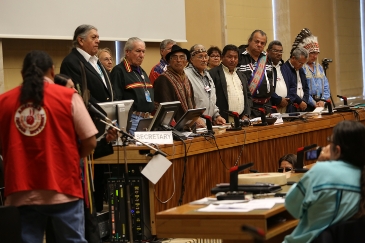The 2013 Symposium, entitled: "Indigenous Peoples at the United Nations: from the experience of the First delegates to the empowerment of the younger generation", brought together the first Indigenous Delegates that came before the UN and Indigenous youths from the Americas, Asia, Africa, the Arctic and the Pacific for a four-day conference. Laying the groundwork for a review of 35 years of promotion of Indigenous Peoples' rights through intergenerational and interactive dialogues with a formal, symbolic and public component, the Symposium gave rise to rich discussions and results.
The Symposium conferences were held from September, 10 to 13, 2013 at the Palais des Nations, in Room XVI, where the elder delegates were invited for the first time, in September 1977, at the "International NGO Conference on discrimination against indigenous populations in the Americas".
On proposal of the Aymara historian from Bolivia, Carlos Mamami, and following the UN Permanent Forum on Indigenous Issues’ recommendation 073/2009 (E/C.19/2009/14), from the 14th session of the UN Permanent Forum on Indigenous Issues held in 2009, with the common objectives of compiling and propagating the oral memory of the first indigenous delegates, empowering new generations and evaluating advances in the rights of indigenous peoples at an international level.
The objectives of the 2013 Symposium were:
- to organize and film a four-day Symposium that is intergenerational, intercultural and respectful of gender balance on the history of the promotion of the rights of Indigenous Peoples at the United Nations;
- to facilitate networking between the pioneers of Indigenous presence at the UN and the younger generation;
- to train young people in the production of audio-visual materials and in methods of collection and recording of oral memory
- to publicize the central role played by human rights for the recognition of Indigenous Peoples' rights.










